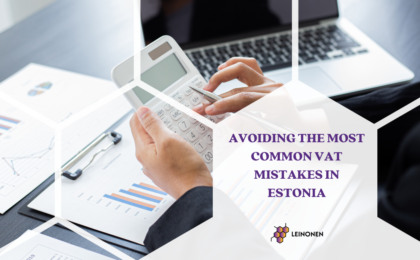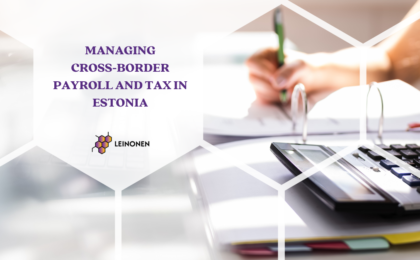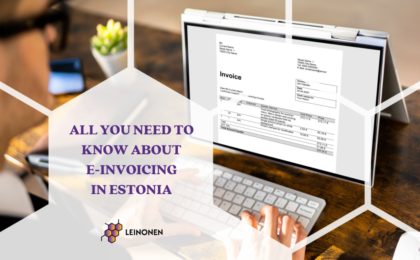Part I – changes in parental leave and parental benefits system
This year will bring some rather substantial changes in labour law which will be implemented in two stages. The first regulation primarily pertains to changes in the parental benefits system and will enter into force on 1st of April, and the second regulation necessary to transpose the EU Directive on transparent and predictable working conditions into Estonian law will enter into force on 1st of August.
Since the parental benefits system that is due to change in April is quite extensive, we have decided to address all these changes in different articles. This way, we can highlight major fundamental changes, give some practical tips and point out what employers and employees should keep in mind.
In the first article, we will focus on clarifying new definitions and take a closer look at parental leave and parental benefits. The second part will be dedicated entirely to child leave and in the third part, we will explain the employee’s right to request flexible working conditions – a concept that was removed from the Employment Contracts Acts and introduced into the Gender Equality Act at the last moment.
Changes in definitions
As mentioned, we should start by learning the new definitions. Pregnancy and maternity leave (in Estonian rasedus- ja sünnituspuhkus) will be renamed maternity leave (in Estonian emapuhkus) while the Estonian term lapsehoolduspuhkus will be renamed vanemapuhkus, but both these concepts still translate into ‘parental leave’ in English. Paternity leave (in Estonian isapuhkus) will remain the same and the definition of child leave (in Estonian lapsepuhkus) will also not be changing. However, the parental benefit (in Estonian vanemahüvitis) and the additional parental benefit for fathers (in Estonian isa täiendav vanemahüvitis) will become the mother’s parental benefit (in Estonian ema vanemahüvitis, i.e. the benefit which will replace the current sünnitushüvitis or maternity benefit in English) and the father’s parental benefit (in Estonian isa vanemahüvitis, currently known as the paternity leave benefit or isapuhkuse tasu in Estonian) as well as the shared parental benefit (in Estonian jagatav vanemahüvitis) which we will cover in the second part of the article.
Maternity leave
Under the new rules, maternity leave will be up to 100 calendar days instead of the current 140 calendar days. However, these 40 days will not disappear but will be moved under the shared parental benefit, which will give the family more flexibility when it comes to claiming parental benefit and will also better serve the objective of balancing work and family life.
The duration of maternity leave depends on the time the mother takes leave. Mothers are subject to a work restriction of 30 calendar days before and after the birth of the child and this also helps to calculate the length of maternity leave. For example, if the mother takes maternity leave 70 calendar days before the expected date of birth of the child, her maternity leave will be 100 calendar days, i.e. 70 days before and 30 days after the birth of the child. It should be noted here that if the mother takes maternity leave less than 70 calendar days before the child is due, these days will be moved to the period of shared parental benefit. Thus, if the mother takes maternity leave 50 days before the expected date of birth of the child, her maternity leave will last 80 days, i.e. 50 days before and 30 days after the birth of the child, and the remaining 20 days will be carried over to the period of shared parental benefit. Keep in mind that this rule does not apply if the mother takes maternity leave less than 30 days before the expected date of birth of the child, i.e. within the so-called work restriction period, because this contradicts the objective of the law. In this case nothing moves to the period of shared parental benefit.
Mother’s parental benefit
Under the new rules, the maternity benefit (sünnitushüvitis) will be replaced by the mother’s parental benefit (ema vanemahüvitis). The mother’s parental benefit will be paid on a monthly basis instead of the lump sum advance payment as before. The mother’s parental benefit will have the same minimum rate as the current parental benefit (i.e., the minimum wage for the previous year) and there is generally no upper limit. Derogations apply to the calculation of the mother’s parental benefit in the case of successive births.
Paternity leave and father’s parental benefit
The regulation on paternity leave will remain largely unchanged. The father becomes entitled to the father’s parental benefit 30 days before the expected date of birth of the child, and he may withdraw this benefit day-by-day until the child reaches the age of three or the moment he opts for the shared parental benefit. Employers have the right to refuse to grant paternity leave in parts lasting less than seven calendar days.
Shared parental benefit
The shared parental benefit is a new concept introduced to our legal system. What exactly is it? In short, after the end of the mother’s parental benefit period, the mother and the father can decide which of them will continue to receive a parental benefit. Parental benefit is payable from the day on which such a right arises until the child reaches the age of three, up to 605 calendar days per child. This includes calendar days for the mother’s parental benefit, the father’s parental benefit as well as the shared parental benefit. Since maternity leave can last up to 100 calendar days and paternity leave up to 30 calendar days, the length of the shared parental benefit is usually 475 calendar days. Parents can use the shared parental benefit as they wish by calendar days. This will give families more options to organise their work life.
Another innovation is the possibility for parents to take 60 calendar days of parental leave at the same time, with both parents receiving parental benefit. This will reduce the total period for which parental benefit is paid, but the total benefit amount will not be affected.
Let us provide an example to illustrate this approach: the mother has been on maternity leave for 100 days, for which she has received the mother’s parental benefit for 100 days. After that, the father will also stay at home for 60 days. As the father is entitled to 30 calendar days of paternity leave, he receives the father’s parental benefit for this period and the remaining 30 calendar days are paid as shared parental benefit. As a result, this family will receive parental benefit for 605 – 100 – 30 – 30 = 445 days.
Term for advance notice
Compared to the current procedure, the updated Employment Contracts Act stipulates that employees must notify their employer at least 30 calendar days in advance of taking maternity, paternity or parental leave. Until now, mothers did not have to inform their employer of their certificate for maternity leave because it was incapacity for work. Employees must now also notify their employer 30 calendar days in advance of interrupting parental leave (instead of 14 days). Part of the reason for introducing the 30-calendar-day term for advance notice is also to protect employers. More specifically, employers will now have better options when it comes to organising their work as employees can start taking parental leave and use the shared parental benefit split into individual calendar days. In theory, this could result in a situation where an employee is at work for 3 days and then on parental leave for a week, then back at work for a few days and on parental leave again. However, as such an arrangement requires a month’s notice, and the parties to the employment relationship are still expected to act in good faith towards each other, any relevant work arrangements can hopefully be resolved to the satisfaction of both parties with sufficient advance notice.
In summary
The objective of the updates that will enter into force, is to give the parties to the employment relationship more flexibility in terms of combining their work and family life for optimal balance. If you have specific questions related to changes in the parental leave and benefits system, incl. the potential need to amend employment contacts, feel free to contact Leinonen’s legal and tax advice department where advisors will be happy to find an individual solution for each inquiry.
Author: Keiu Rebane
Position: Legal Advisor
E-mail: keiu.rebane@leinonen.ee
_(1)_block.png)



